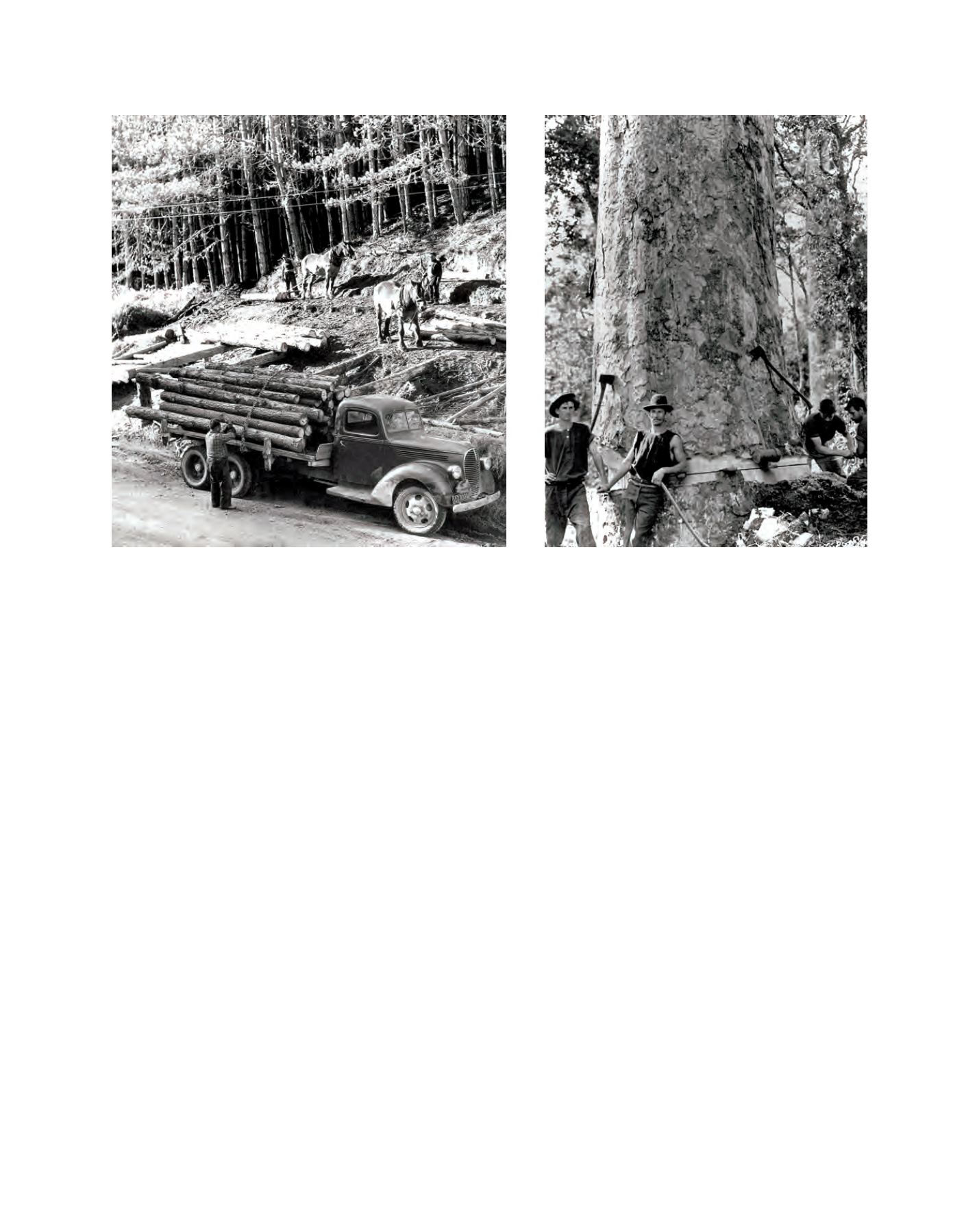

[
] 151
Changing forest ownership
New Zealand’s planted forests have undergone many
changes in ownership with significant social conse-
quences. The industry began as a Government initiative
and many major forest plantations were owned by the
Crown. During the 1980s, these public assets were sold
to private companies in New Zealand and offshore. In
some cases the land and trees were sold. In other cases,
the trees were sold while the land remained under
Crown ownership.
The only forests to remain under state manage-
ment were those growing on land over which Maori
had legitimate claims. Maori ownership of planted
forests is being clarified through the settlement of
claims made in relation to the Treaty of Waitangi.
3
The transfer of Crown-owned land to Maori tribes
will add greatly to existing Maori land resources and
business opportunities. These include areas of indig-
enous forests that Maori would like to enhance and
manage for a range of goods and services, including
timber production.
Research for a productive sector
Research activity funded by both Government and
private interests in New Zealand has had a strong focus
on the sustainable management of New Zealand’s forests
and has supported effective environmental stewardship.
More recently, research has stimulated recognition of
the broader role of planted forests in the provision of
important non-timber benefits such as biodiversity
habitat, clean water and carbon sequestration.
ha per annum on average from 2020 to 2022. By this time, a high
proportion of planted forests will be in their third rotation, and some
forests will enter their fourth.
On a global scale, New Zealand forest plantations account for 1.1
per cent of the world’s total supply of industrial wood produced
from only 0.05 per cent of the forested area, making it a highly
productive, sustainable resource. Over 52 per cent of New Zealand’s
planted forest estate is environmentally certified through the Forest
Stewardship Council, and approximately 40 per cent of wood prod-
ucts have chain of custody certification.
A key step in the evolution of the forestry sector was the signing
in 1991 of the New Zealand Forest Accord between the forestry
sector and the New Zealand Rainforest Coalition.
2
This agreement
limited the expansion of plantation forests onto land occupied by
indigenous vegetation while recognizing that plantations of either
introduced or indigenous species are an essential source of renew-
able fibre and energy.
Indigenous forest management
New Zealand’s remaining natural forests cover approximately 6.5
million ha or 24 per cent of the total land area, most of which is
conservation estate. Timber production from natural forests on
privately owned land is approximately 10,000 m
3
, which is very
minor in comparison to the 24.8 million m
3
harvested from planted
forests. Harvesting of native timber is controlled by sustainable
forest management plans and permits administered by the Ministry
of Agriculture and Forestry.
Numerous landowners, interest groups and Maori, in particular,
are interested in re-establishing forests of key species such as totara
and kauri in order to provide future supplies of indigenous timbers
for traditional and contemporary uses.
Early pine logging in central North Island, circa 1950
Native kauri logging, circa 1900
Image: Scion
Image: Scion
















